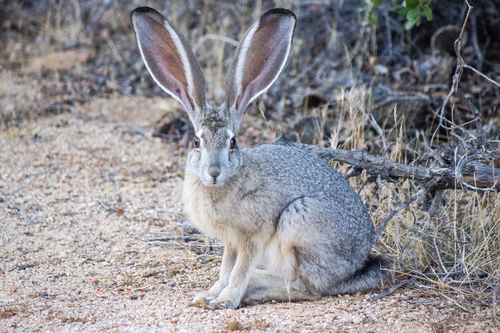
Black-tailed Jackrabbit
The Black-tailed Jackrabbit, with its iconic long ears and sprinting prowess, dashes across North America's deserts and plains. Its herbivorous habits balance plant growth, while predators rely on its abundant presence, weaving a vital ecological tapestry.
1-5 years
Lifespan
1.36 - 2.72 kg
Weight
Length: 61 cm
Size
Brown, Black, White
Color
243 days
Age of Sexual Maturity
14-21 days
Age of Weaning
45 mph
Top Speed
Least Concern
Conservation Status
Decreasing
Population Trend
Distribution Range of the Black-tailed Jackrabbit
Lepus californicus, commonly known as the black-tailed jackrabbit, is native to North America. Its geographical distribution stretches across the western United States and Mexico, and parts of southern Canada. Specifically, it is found in the Great Plains, the southwestern United States, and into Mexico, reaching as far south as Mexico's central plateau.
Black-tailed Jackrabbit's Habitat
Environmental Conditions
The black-tailed jackrabbit primarily inhabits arid and semi-arid regions. It thrives in environments such as deserts, prairies, and open grasslands. These areas are characterized by sparse vegetation, including grasses, shrubs, and cacti, and typically have dry climates with limited rainfall. Temperatures can be extreme, with hot summers and cool winters.
Ecological Niche
Lepus californicus occupies a niche as both a grazer and browser, feeding on a wide variety of vegetation, from grasses and forbs to twigs and shrubs. This species is highly adaptable, which allows it to survive in environments where food is scarce. Its large ears help regulate body temperature, crucial for survival in hot desert conditions. The black-tailed jackrabbit also serves as prey for many predators, including coyotes, eagles, and hawks, and is an integral part of the food chain in its native habitat.
Copyright @ Nature Style Limited. All Rights Reserved.
 English
English